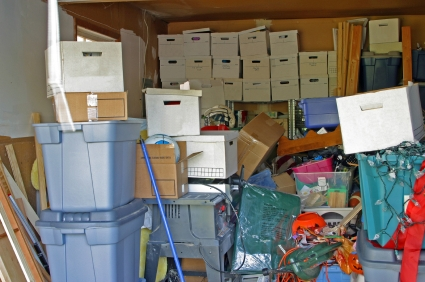Clutter, like most things in life, sneaks up on you. A couple busy months peppered with a few dozens “I’ll get to that later,” and suddenly everything from your fridge to your filing is making you nuts.
Clearly people relate to this struggle, since Rob Jones’ piece on de-cluttering is one of our most popular posts, and for good reason! Getting over clutter will change your life.
Overcoming my clutter changed my life. I sleep better, accomplish more, and get on top of chaos more quickly now that I’ve pared back my home’s contents by 30% or more.
It can take a long time and a lot of work to purge years of accumulation, but once done thoroughly, you can “de-cluttering” your place in a weekend a couple times a year and keep clutter at bay, as I now do.
I’m so passionate about how much de-cluttering has improved my life in every way that I’ve planned a series of posts to help put you on a path to order, space, and sanity. Today, let’s talk about how I got from there to here and why you should get organized too.
De-cluttering from chaos to contentment
Two years ago, a Twitter friend announced she’d help two people downsize their lives, and she picked me after I begged to be one.
I’d asked her help because I’d long ago made the mistake after my mother’s death of packing stuff up and taking it to my new home. I put The Avoidance Boxes in storage, and instead of dealing with it “soon,” more than a decade passed, and more clutter piled up in the “I’ll get to it” storage corner, until the whole storage needed to be “got to.”
Procrastination ain’t your psychic friend. Next thing, it was like I was my own episode of Hoarders, and completely lost at sea. I didn’t know where to start, that was the hardest part. I was overwhelmed — surrounded by everything that reminded me of just how out-of-step I was with my life.
Guidance from a friend proved a big help. Objectivity helps! Don’t be afraid to ask a compulsive-cleaning friend — you’d be surprised how many Type-A organization fiends are just dying to fix your chaos.
Get a de-cluttering plan, Stan: what’s your objective?
I know why I wanted to de-clutter, but what’s in it for you? What are you trying to achieve? Why? You need to know your goals before you get started.
Openness? Space? Sanity? Room to breathe? A more manageable workspace? Just a clear floor path through your living space?
Here’s where you need to accept that this means making actual change. You can’t just “rearrange things.” Plan to lose a considerable part of what you own. This means every single item in your home or office requires a decision: Keep or toss?
Should it stay or should it go now?
As they say, if it isn’t useful, hasn’t been used in months, or doesn’t beautify your home, it needs to go.
Every single item you own needs a decision made, from that extra stapler to your high school yearbooks. Yes, you need to actually be thinking for this — you need to hold that item in your hand and consider, “Do I need this? Does it help my life? Does it feel good around me? Can someone else use this?”
If, when you first look at a nostalgic item, your first emotion is of sadness, wistfulness, or loss, then it needs to go. Getting rid of it feels hard, but then comes a catharsis sense of “Finally. Good! NEXT.”
The emotional chokehold of clutter
The emotional value of things around you compounds like interest in a bank account — more emotion piles on top of existing emotions, and is partly why we get so overwhelmed when our places fill up.
Papers you haven’t sorted — a reminder of what you have yet to get done. Those crafts piling up, more guilt about what you don’t “do” in life, more resentment about time you don’t have for doing things that once were fun.
That clutter is negativity, it drowns us in negativity, but we fool ourselves into thinking it’s “stuff.” Then we buy new “organization aids” to help us “organize” the clutter, but the problem’s still there: We’ve got too much stuff, and now we’re going broke trying to hide it.
Don’t just rearrange, change your space
Where many of us go wrong when dealing with clutter is, we do cosmetic work but don’t get rid of things. We clean up, disguise the chaos, but open that closet, or those boxes, or that drawer, and nothing but a jumble of stuff waits you.
To get started with clutter, look past the chaos that’s there already, accept that things are gonna get a whole lot uglier before they get prettier, and start — get a plan, and do it.
De-cluttering is a powerful way to take charge of your life, but it’s a difficult and deeply personal process for some, hence why it makes compelling TV. Just look at shows like Hoarders, Clean Sweep, and Enough Already! with Peter Walsh.
(Original article at BuildDirect)

